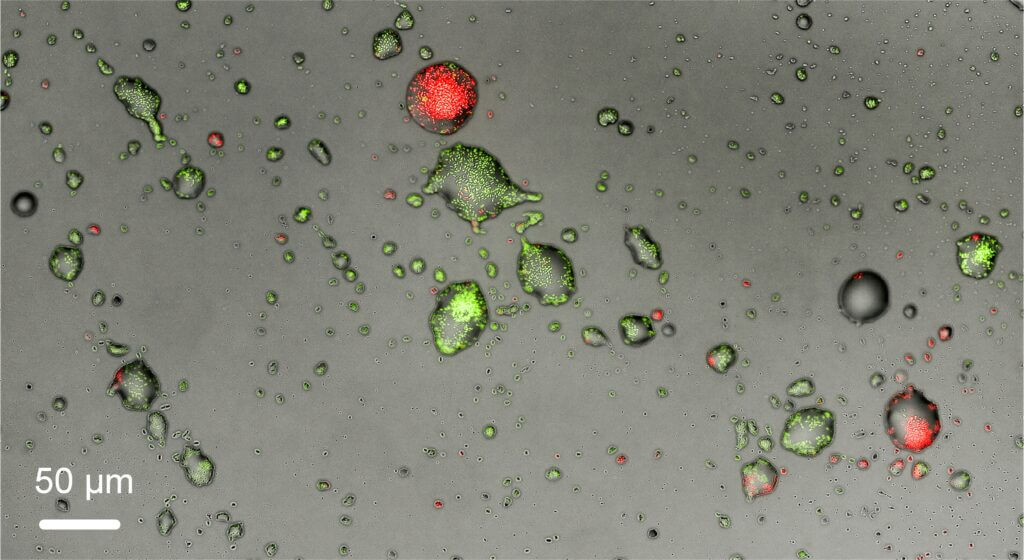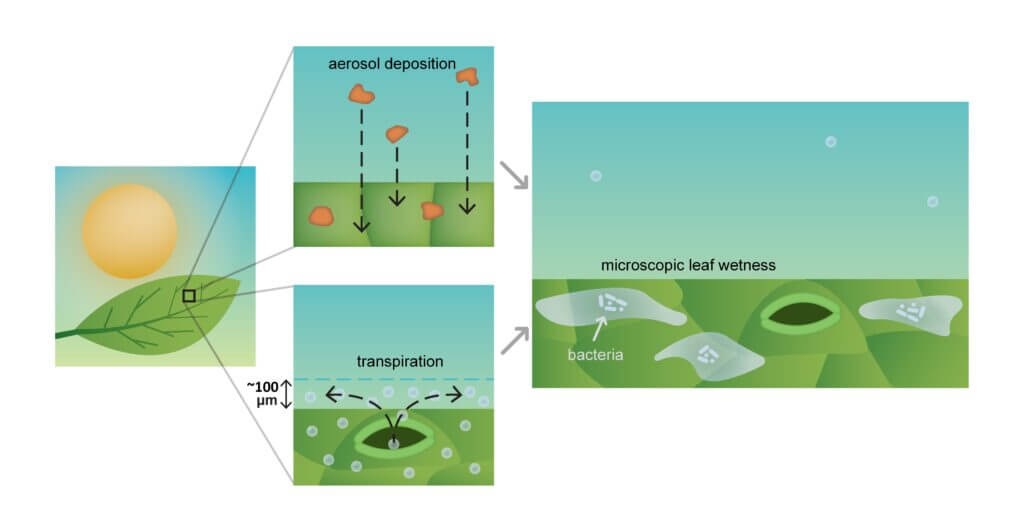Microscopic oases on plant leaves allow bacteria to survive during the day

Plants, like humans and other animals, have a small "world" of bacteria living on their bodies - and many of these bacteria are necessary and beneficial to them. But bacteria, like all living things, need water; How do they manage to survive on the leaves of plants, which are dry during the day?
This question combines the worlds of biology, physics and chemistry, and the answer to it can also be useful in preserving the flora and in particular - in the field of agriculture. Dr. Nadav Kashtan from the Faculty of Agriculture, Food and Environment at the Hebrew University therefore turned to investigate this issue.
Many surfaces in and around the house appear completely dry to our eyes - but the appearance of the eyes can be deceiving. A glass surface, for example, can be dry to the eye and even to the touch, but through the microscope lens we will see tiny drops of water containing bacteria or clusters of bacteria. These drops are so tiny that they cannot be seen with the naked eye; Their diameter is smaller than the thickness of a hair. Still, testing showed that bacteria can survive inside such droplets, thus defending against dehydration.What is the question? Are the mechanisms that help bacteria deal with dryness related to cooperation between cells?

The question of bacteria and their tiny water sources is not only intriguing, but also of economic importance. The surface of a plant, like the skin of animals and humans, carries a huge population of bacteria, called the microbiome. In recent years we are beginning to understand how important the microbiome is to plant health and function. About 10 million microorganisms live on an average leaf - most of them are "good" bacteria, which do not cause diseases and are even beneficial. These bacteria manage to survive in a challenging environment, characterized by extreme changes in temperature, ultraviolet radiation and humidity throughout the hours of the day. In most living environments on Earth, the leaves of plants appear completely dry during the day. How do the bacteria on them manage to survive?
It turns out that even during the day the leaves of the plant are covered with microscopic moisture: a thin layer of tiny droplets, which are not visible to the eye. Tiny dust particles containing salts, which originate in the air (aerosol) and which absorb moisture from the air around them, are responsible for this moisture. During the day, the surface of the leaf is characterized by high humidity, due to evaporation of water from the leaf through tiny openings called pinions. The combination between high humidity and dust containing salts creates the microscopic humidity.
This microscopic moisture tends to accumulate and form tiny droplets in rough and curved areas on the surface. Therefore, droplets form near the microscopic hairs on the surface of the leaf - as well as around bacteria that are on it. Around large clusters of bacteria, larger droplets will form, and around individual bacteria - tiny droplets.
To better understand how the bacteria utilize these tiny water droplets, Dr. Kashtan and his group developed an experimental system that produces microscopic wetness on artificial surfaces. With the help of advanced microscopy, image processing, mathematical models and computer simulations, the researchers examined the distribution of the bacteria on the surfaces - for example, if they settle on the surface as individuals or in groups - and how their arrangement on the surface is related to the microscopic water landscape. Billions of years of evolution have taught the bacteria that when They cooperate and organize together into large clusters, they can gain a survival advantage in the often drying environment
The research - which won a grant from the National Science Foundation - pointed to a fascinating phenomenon: even though they had not taken any course in fluid mechanics, the bacteria organize themselves on the surfaces in a way that improves their chances of survival. Billions of years of evolution have taught bacteria that when they cooperate and organize together into large clusters, they can gain a survival advantage in the often drying environment.
A practical question arising from the research is how air pollution or sprays common in agriculture affect the amount of salts stored on the plant leaves, and therefore - on the microscopic moisture and the bacteria living on the leaves.
Life itself:
Dr. Nadav Kashtan enjoys hiking, diving and cycling.
More of the topic in Hayadan:
- A new theory explains the formation of a coffee stain
- The physics behind the spread of coughing and sneezing - it's time to abandon outdated models
- Fragile is the new unbreakable / Davida Castlewicki
- Scientists have identified the substance essential for the accumulation of oil in plants
- Around the world without fuel
